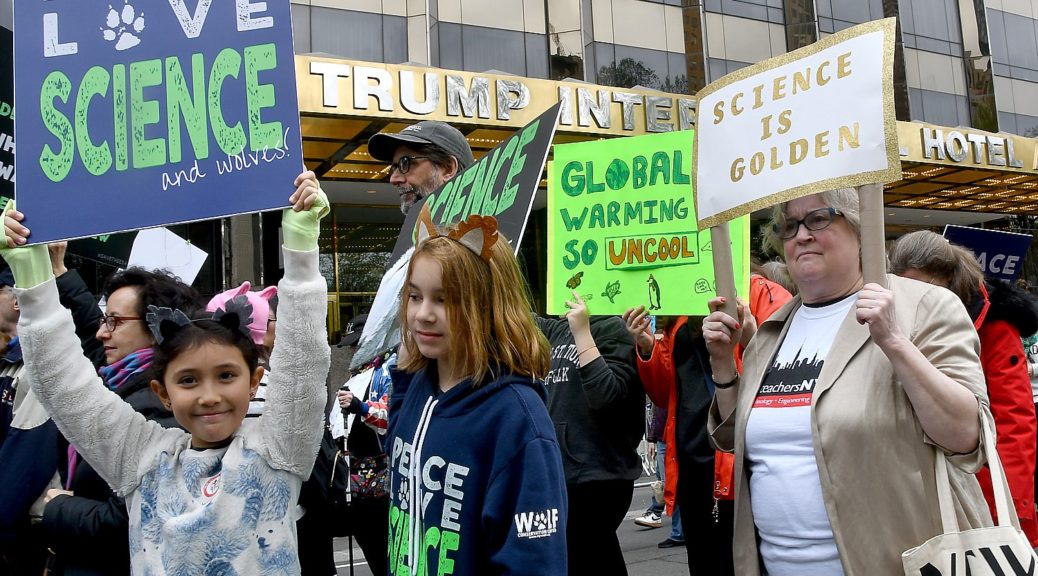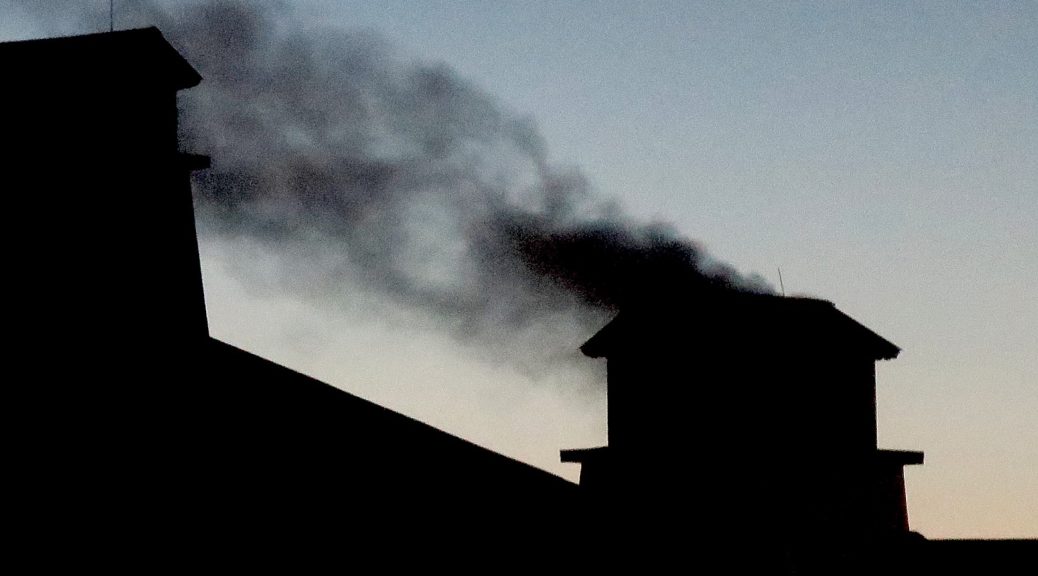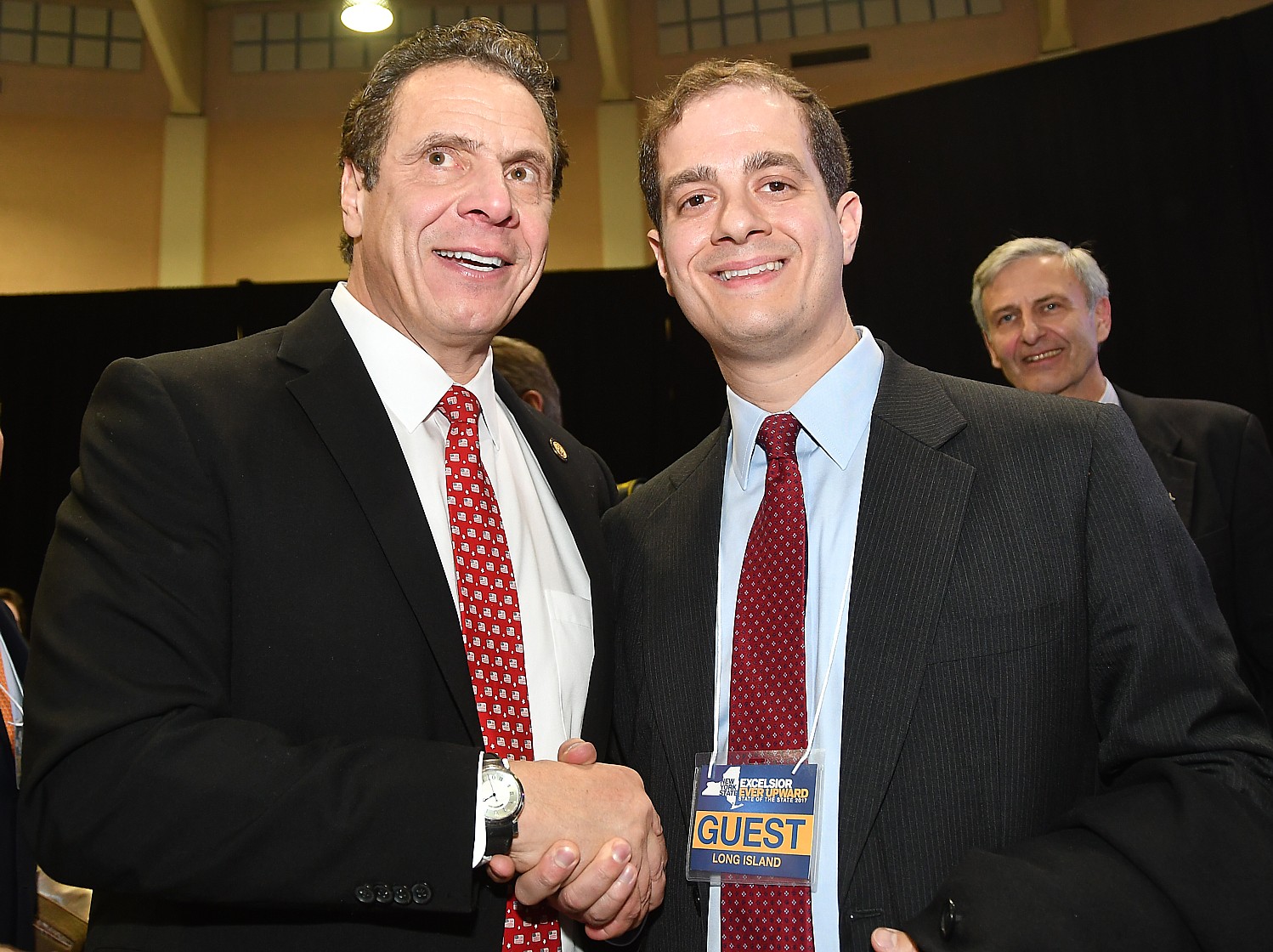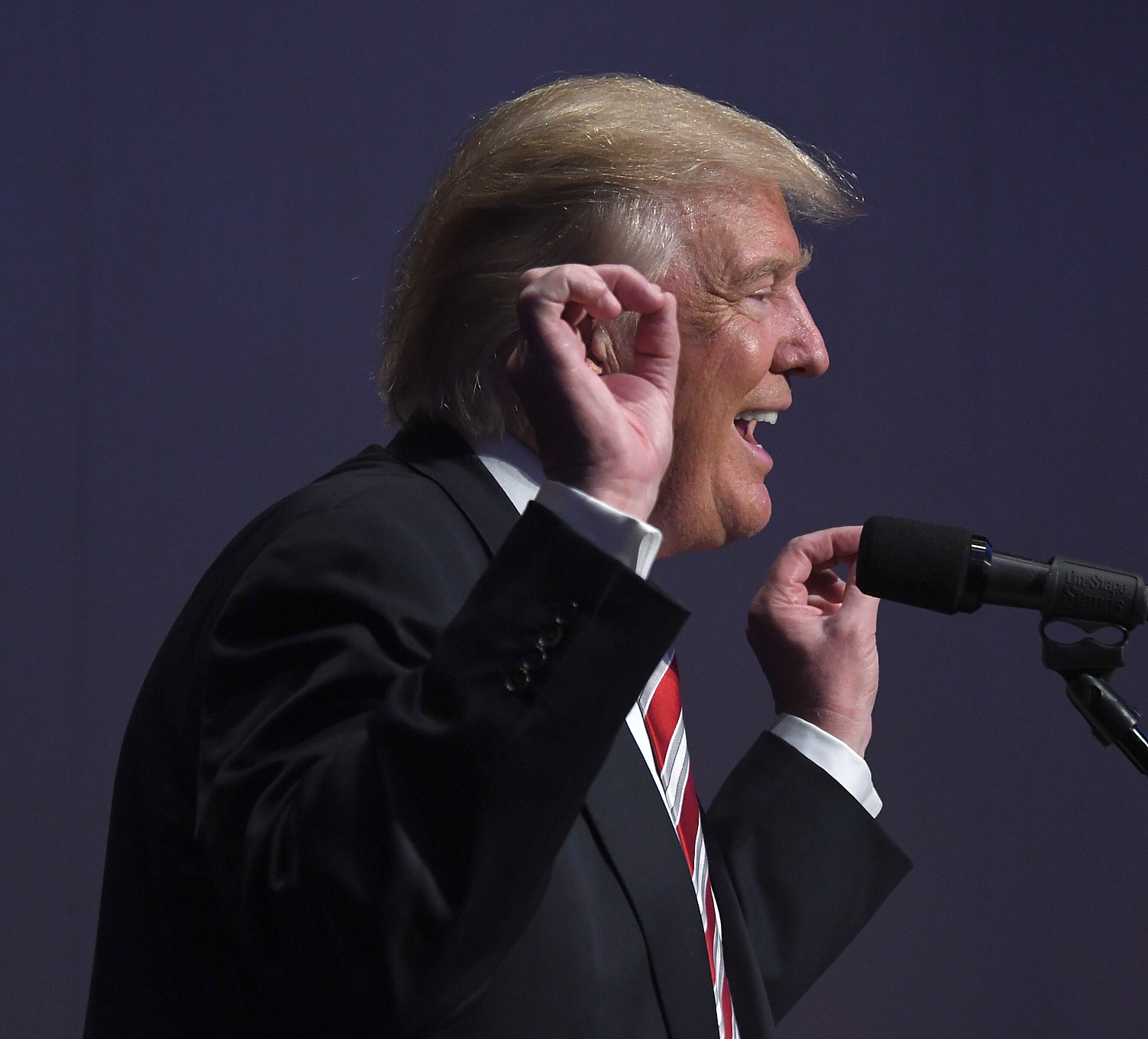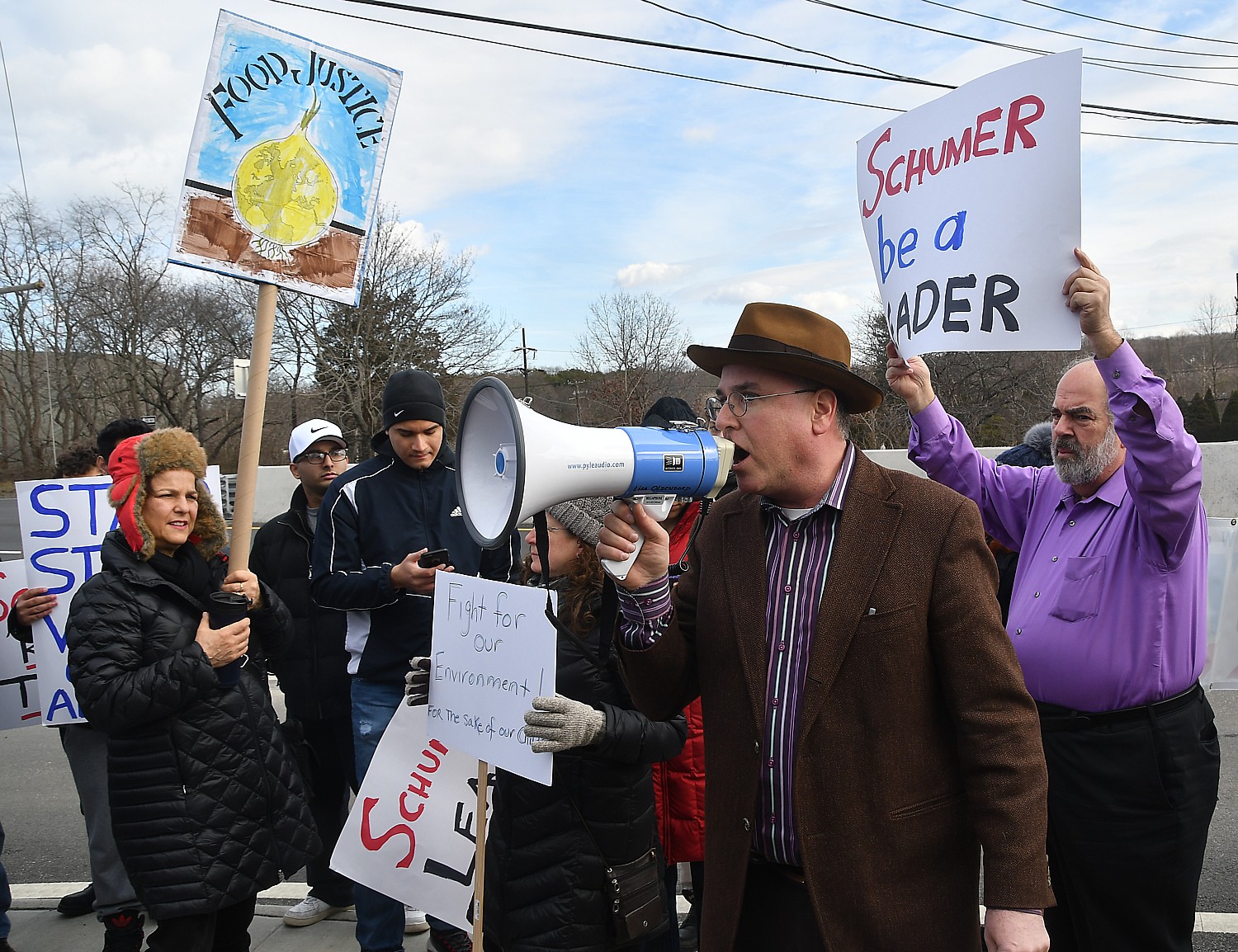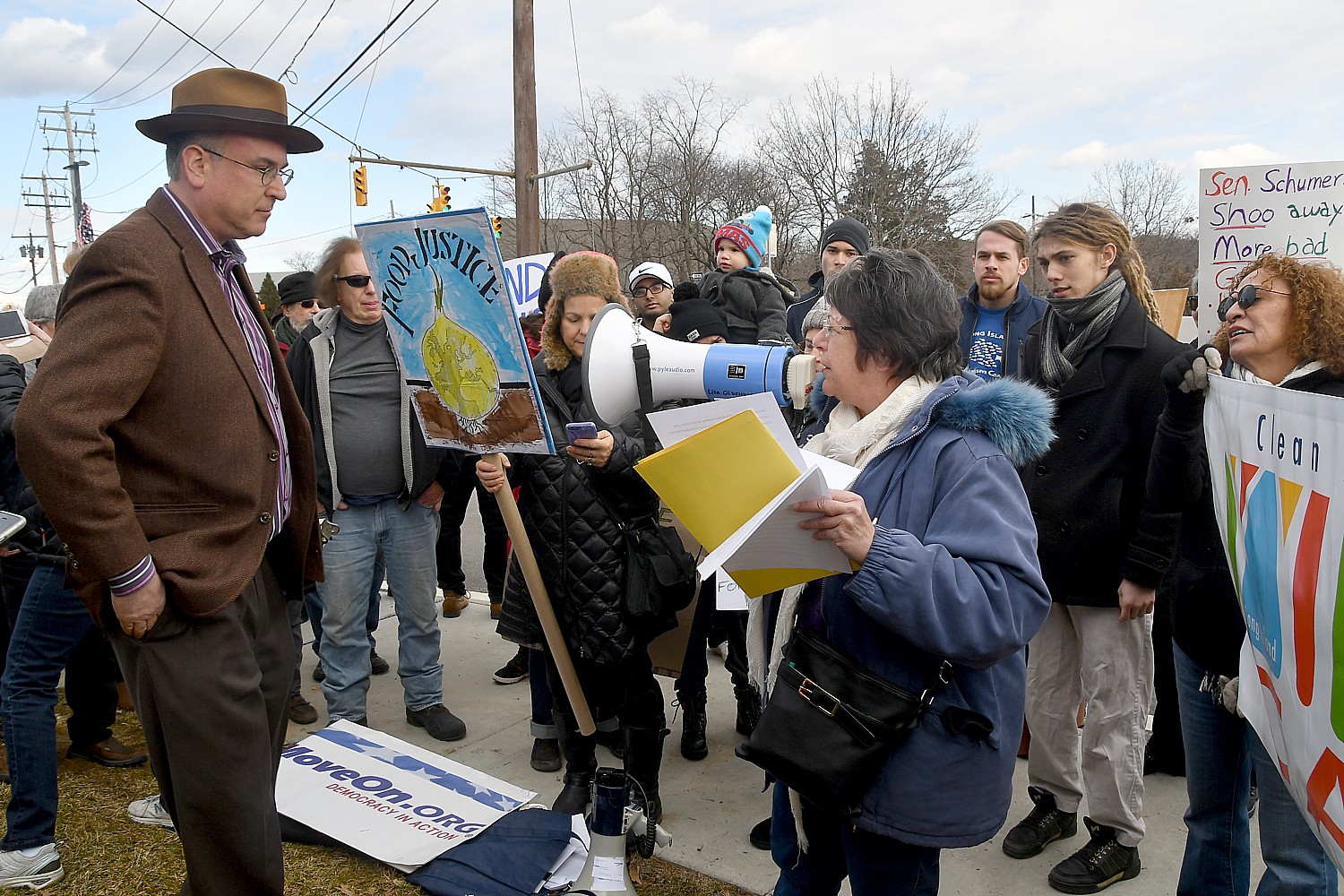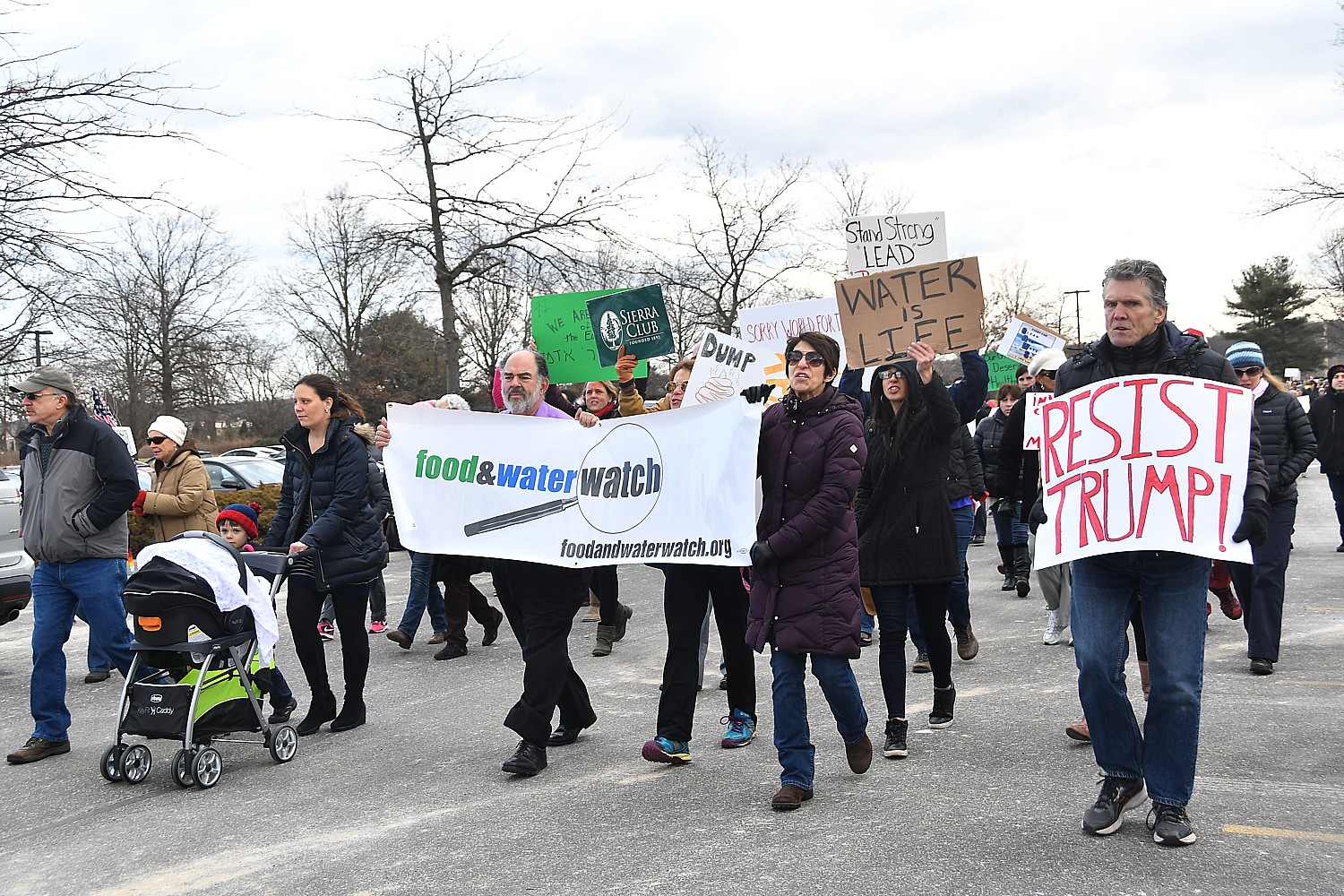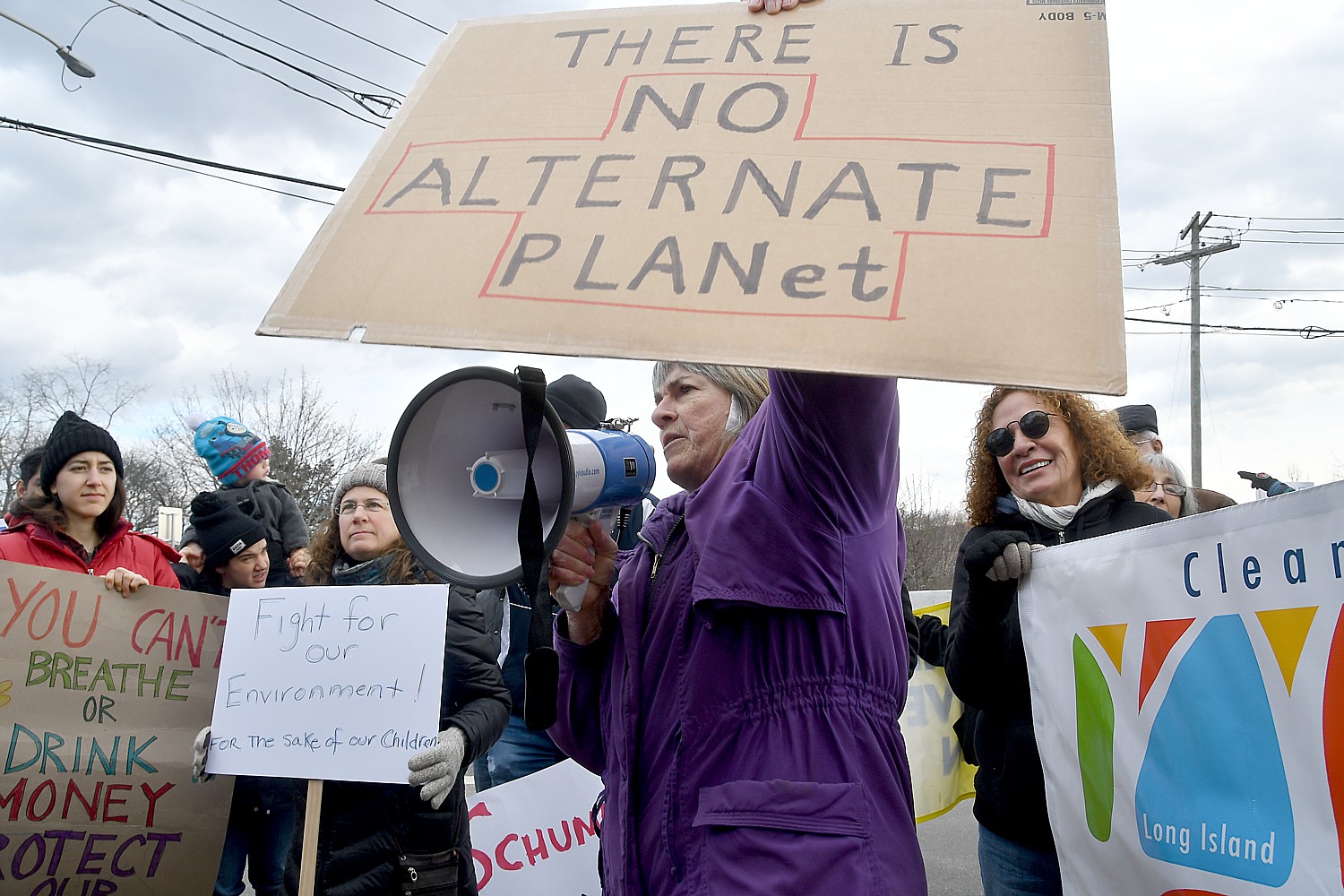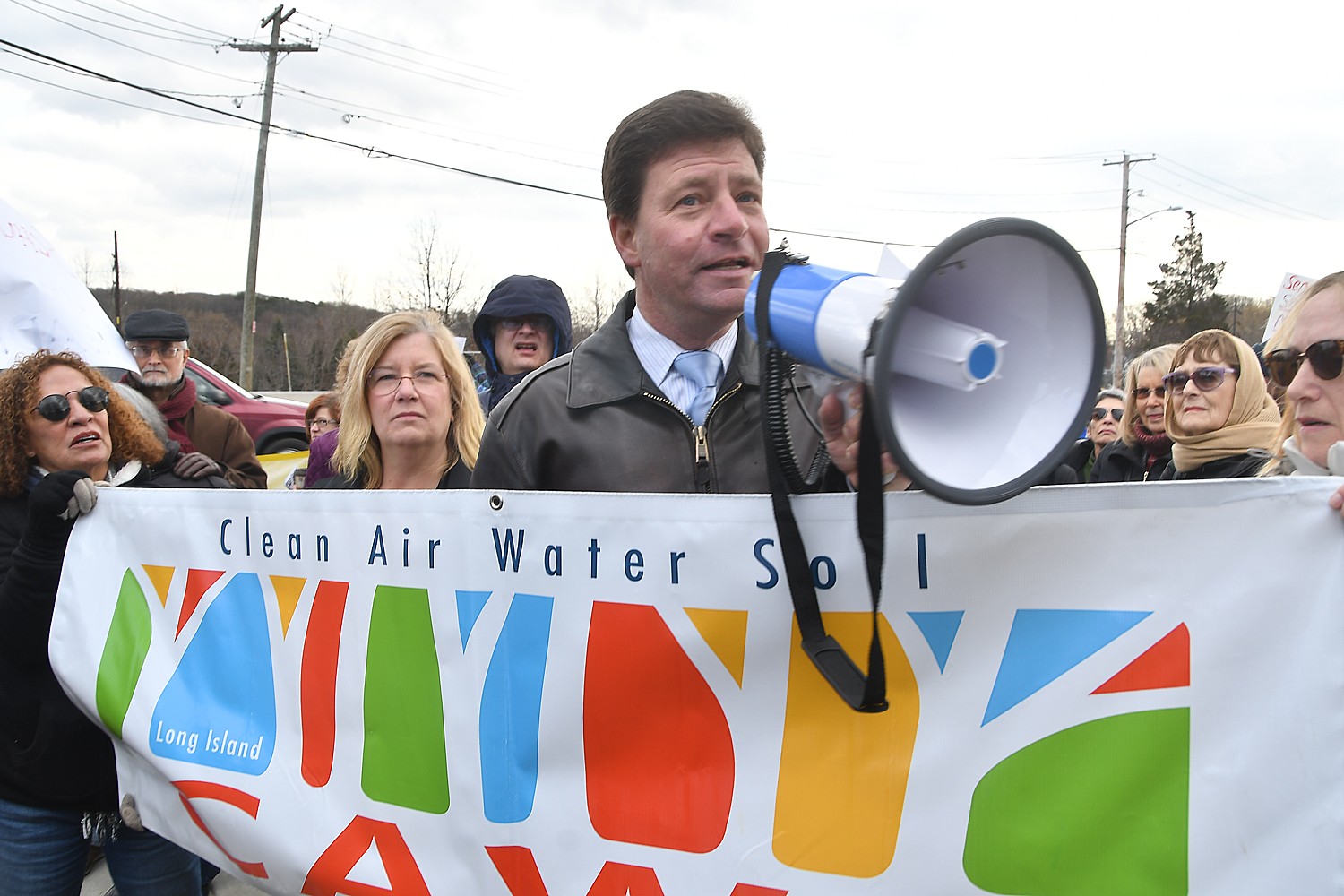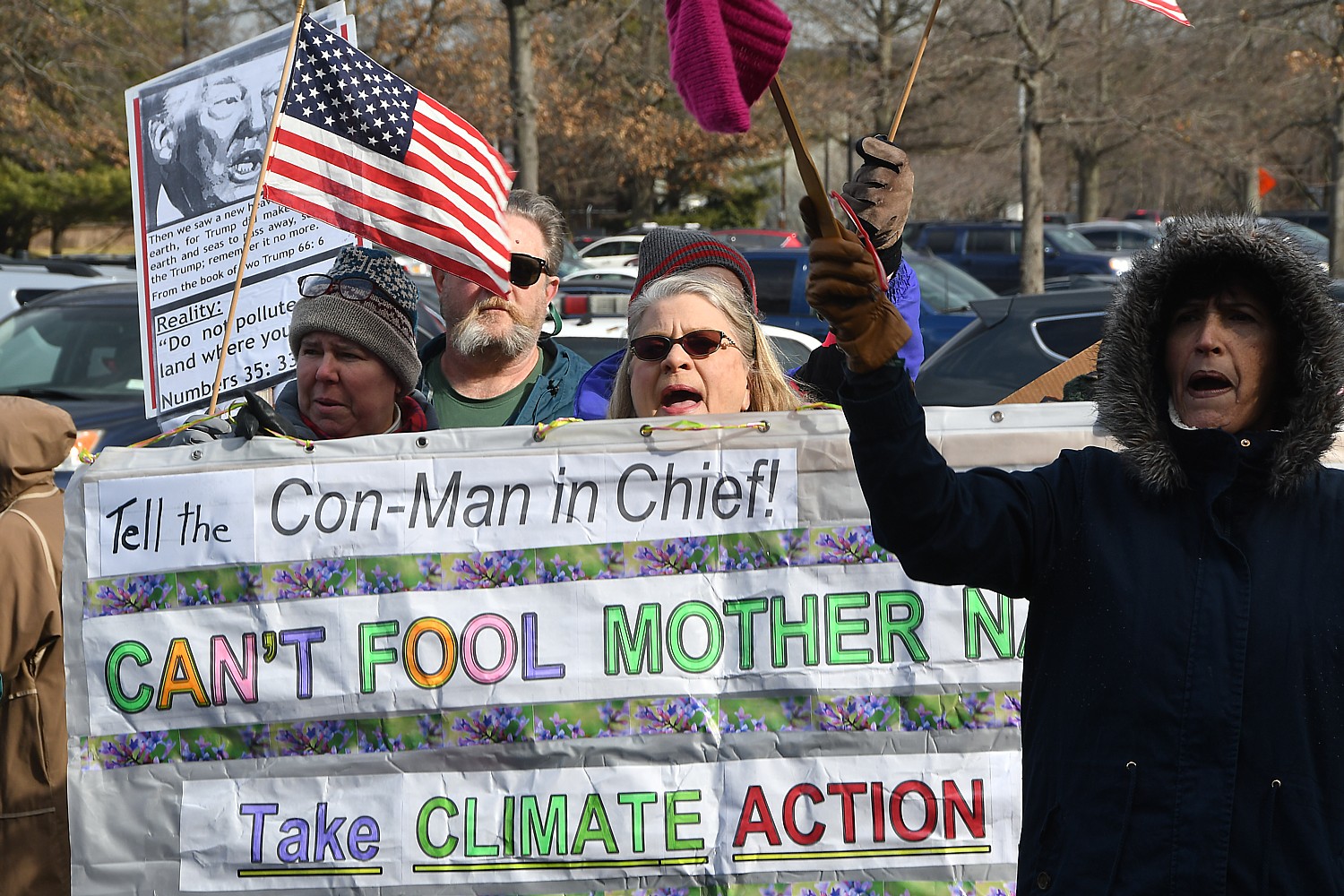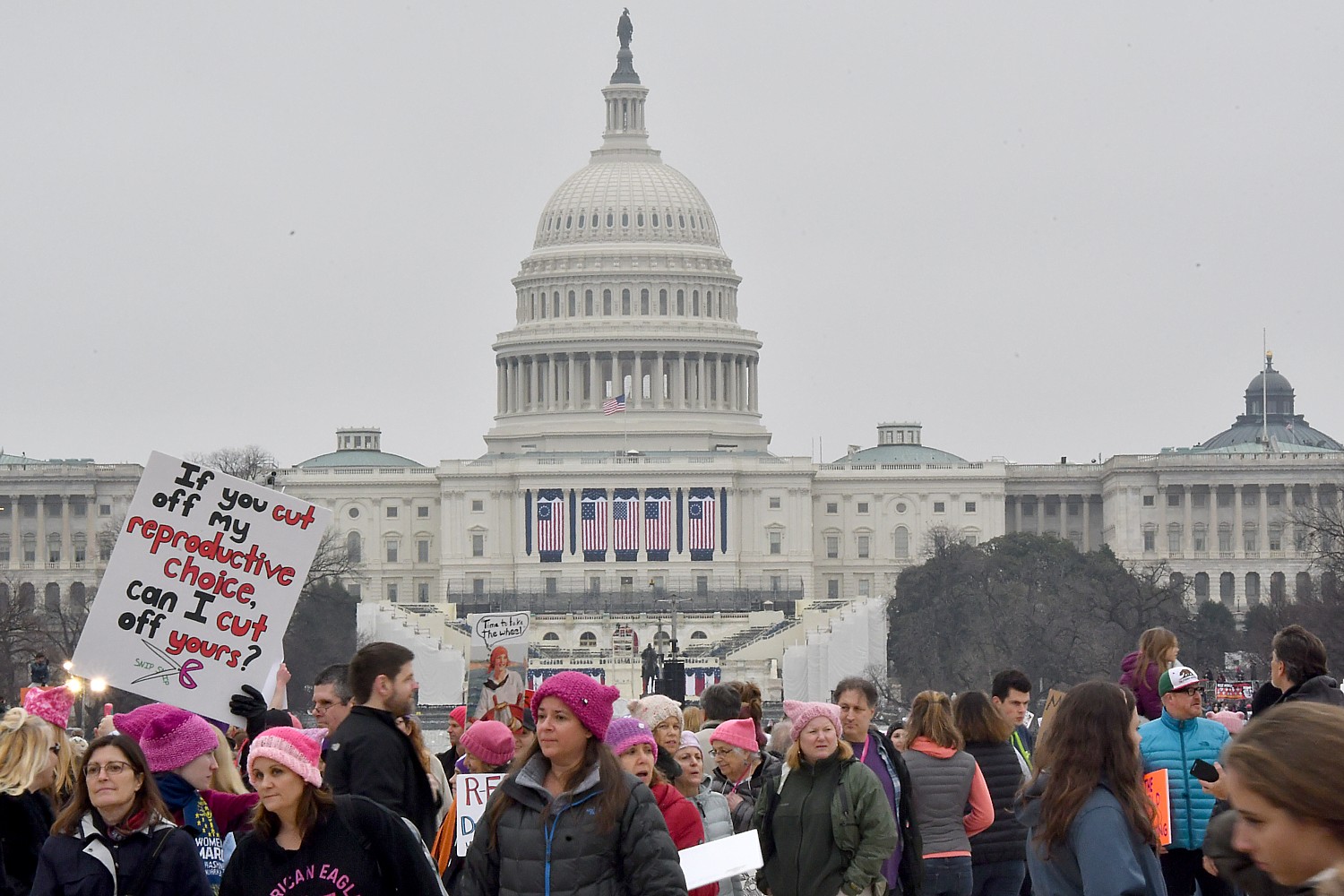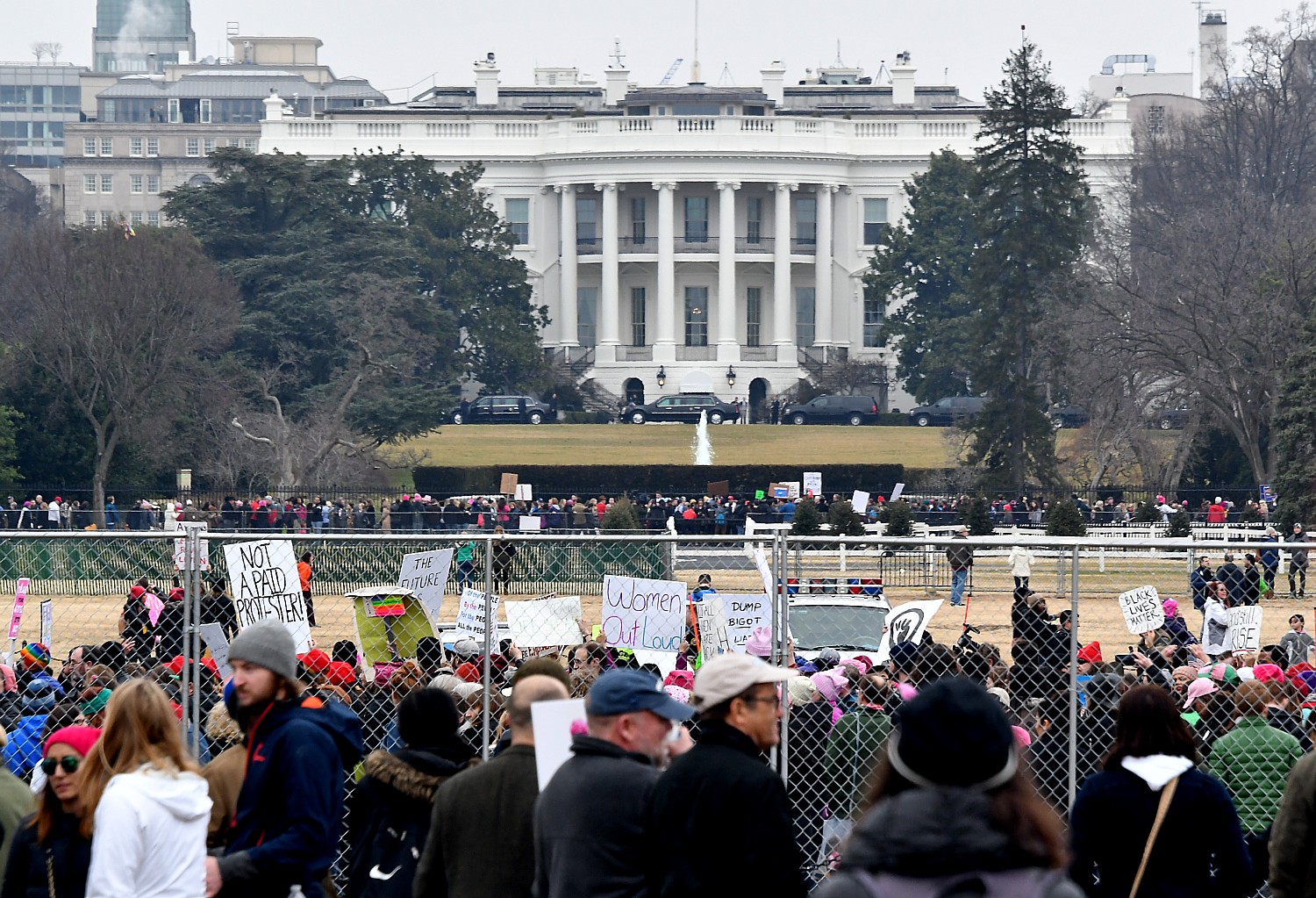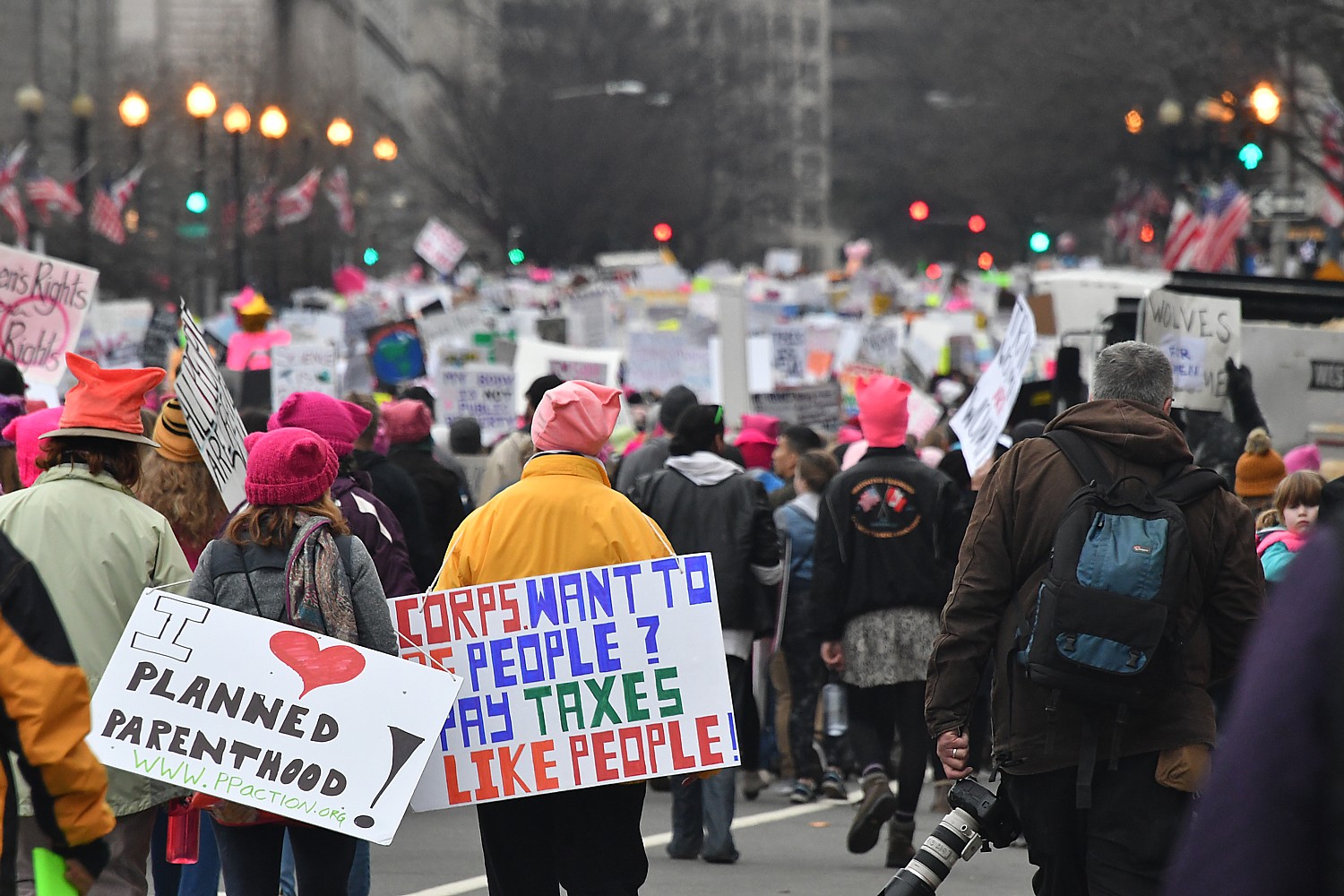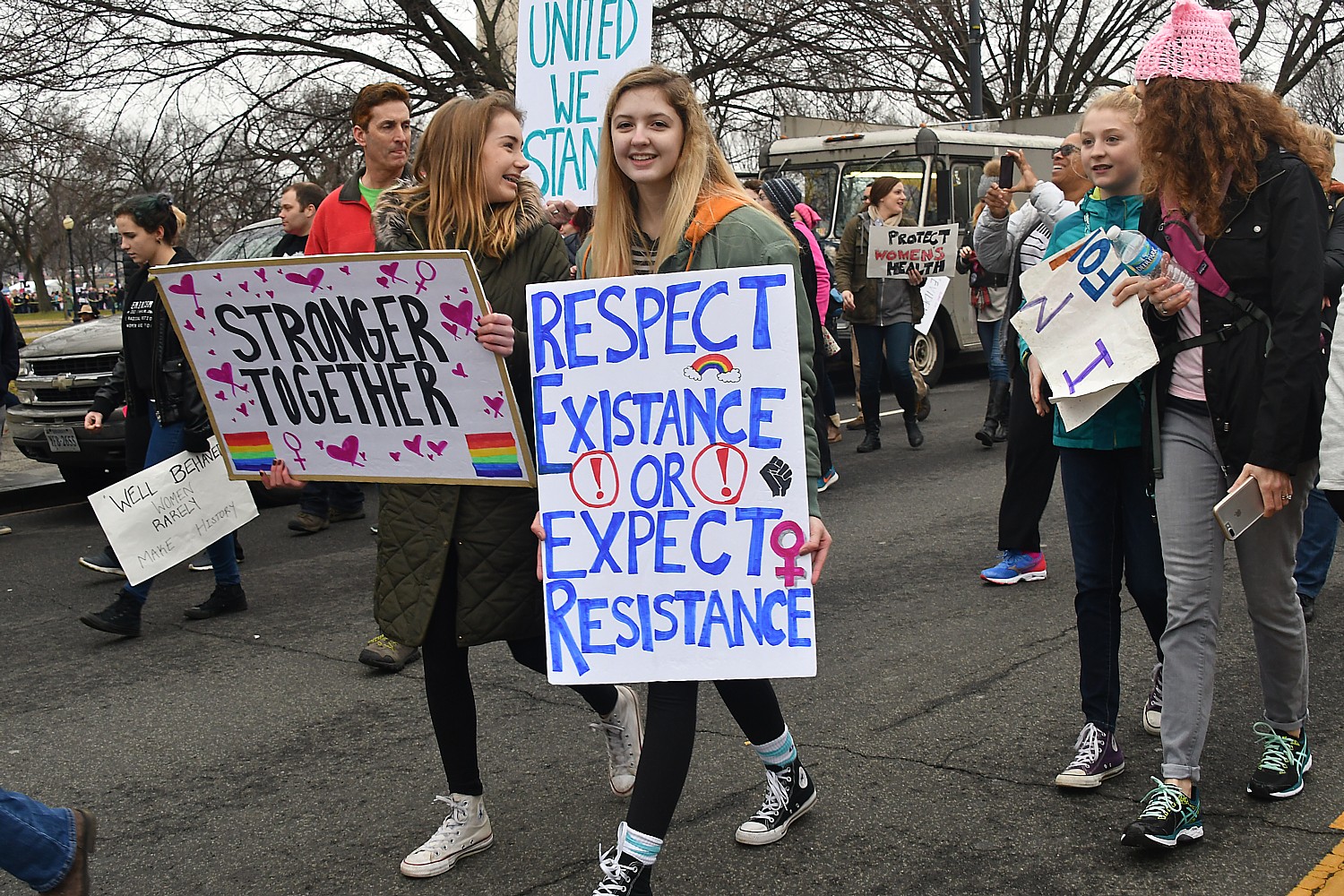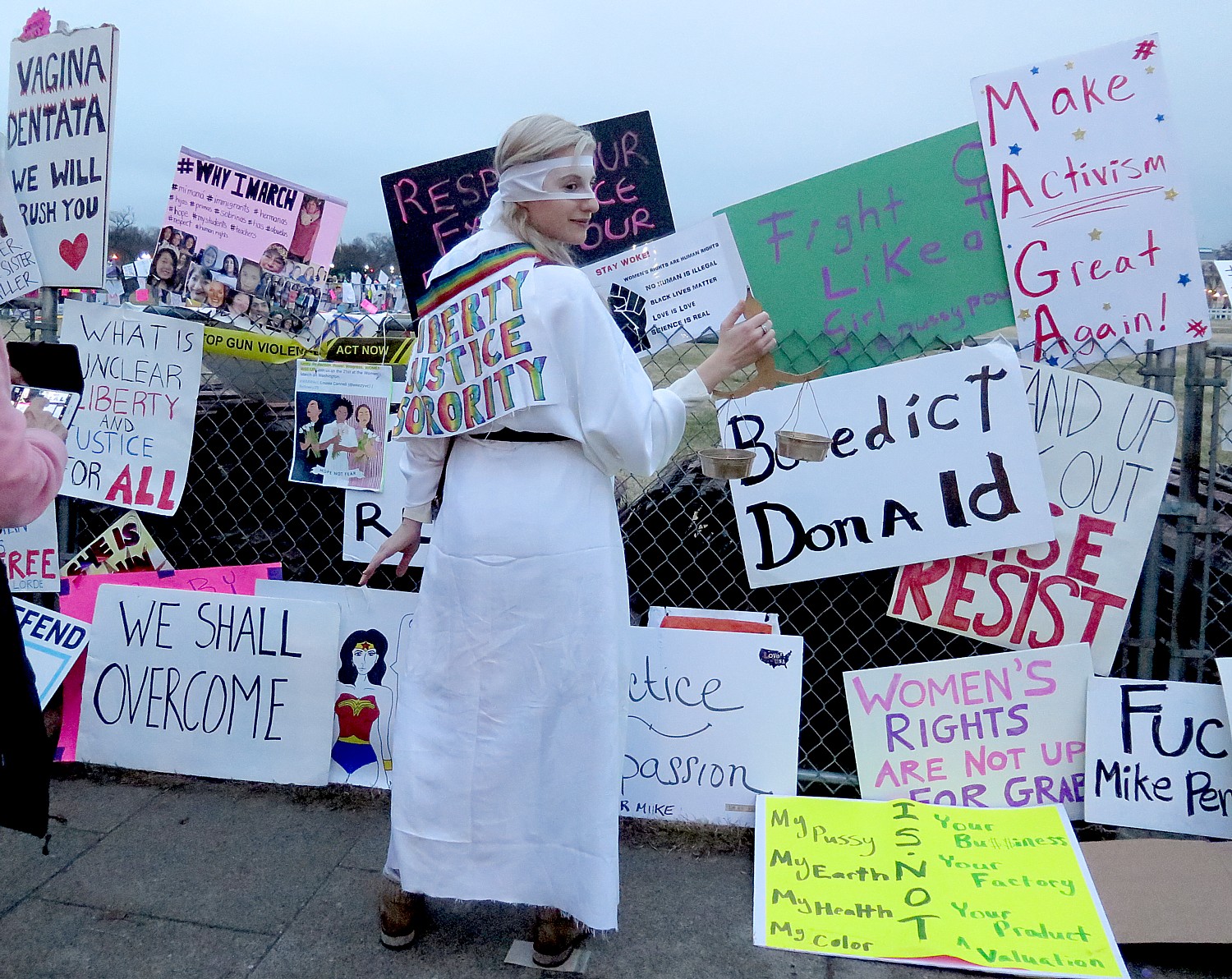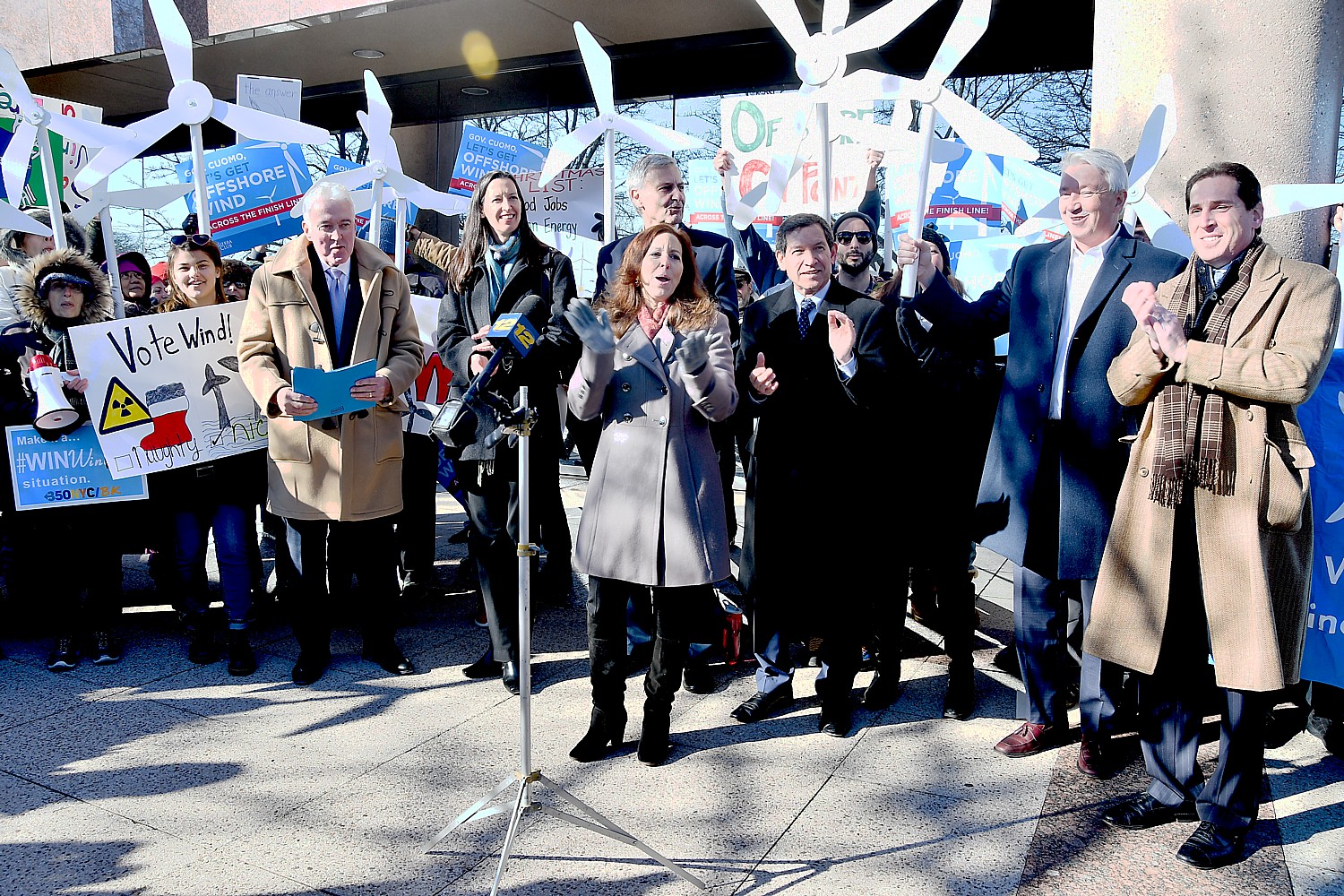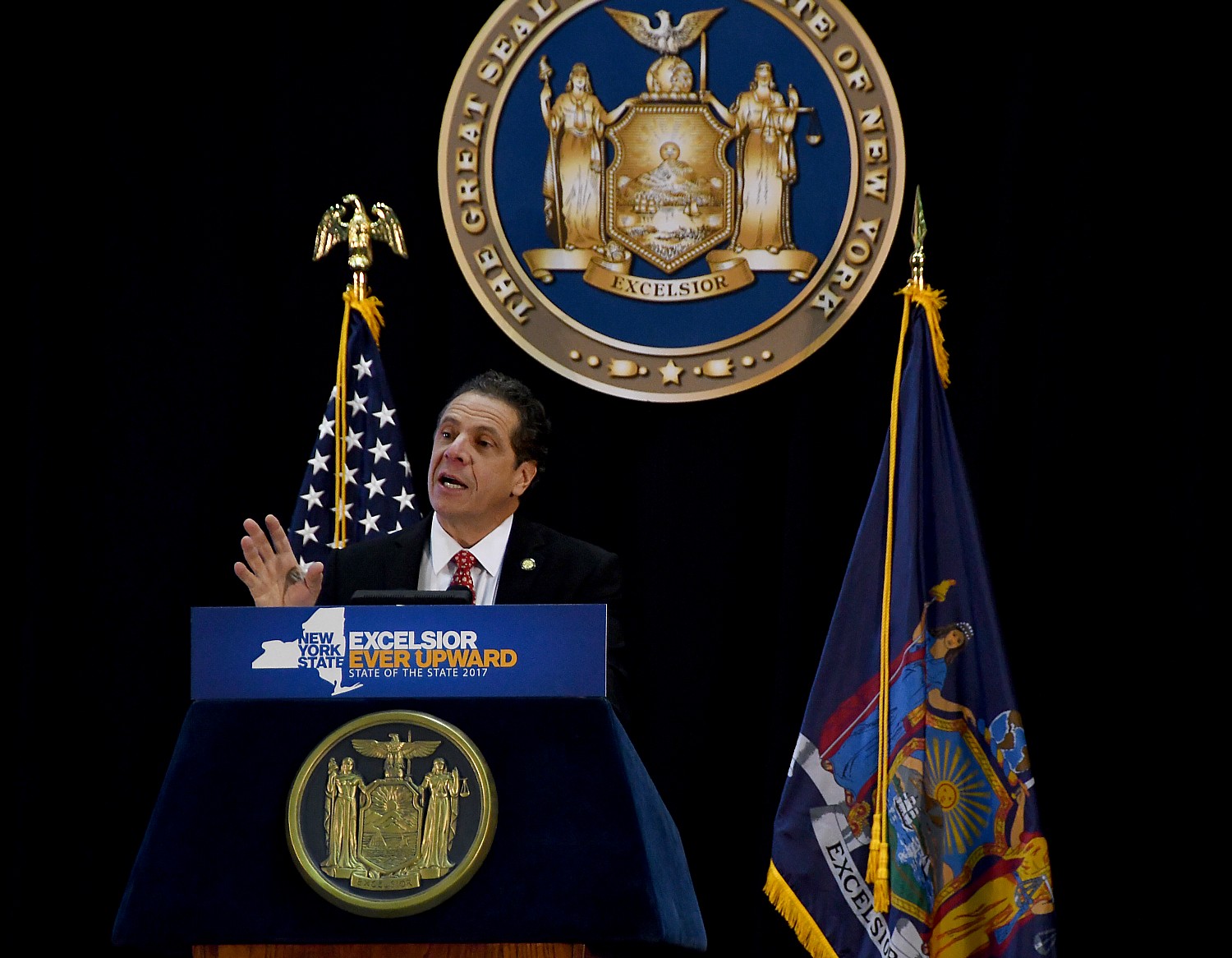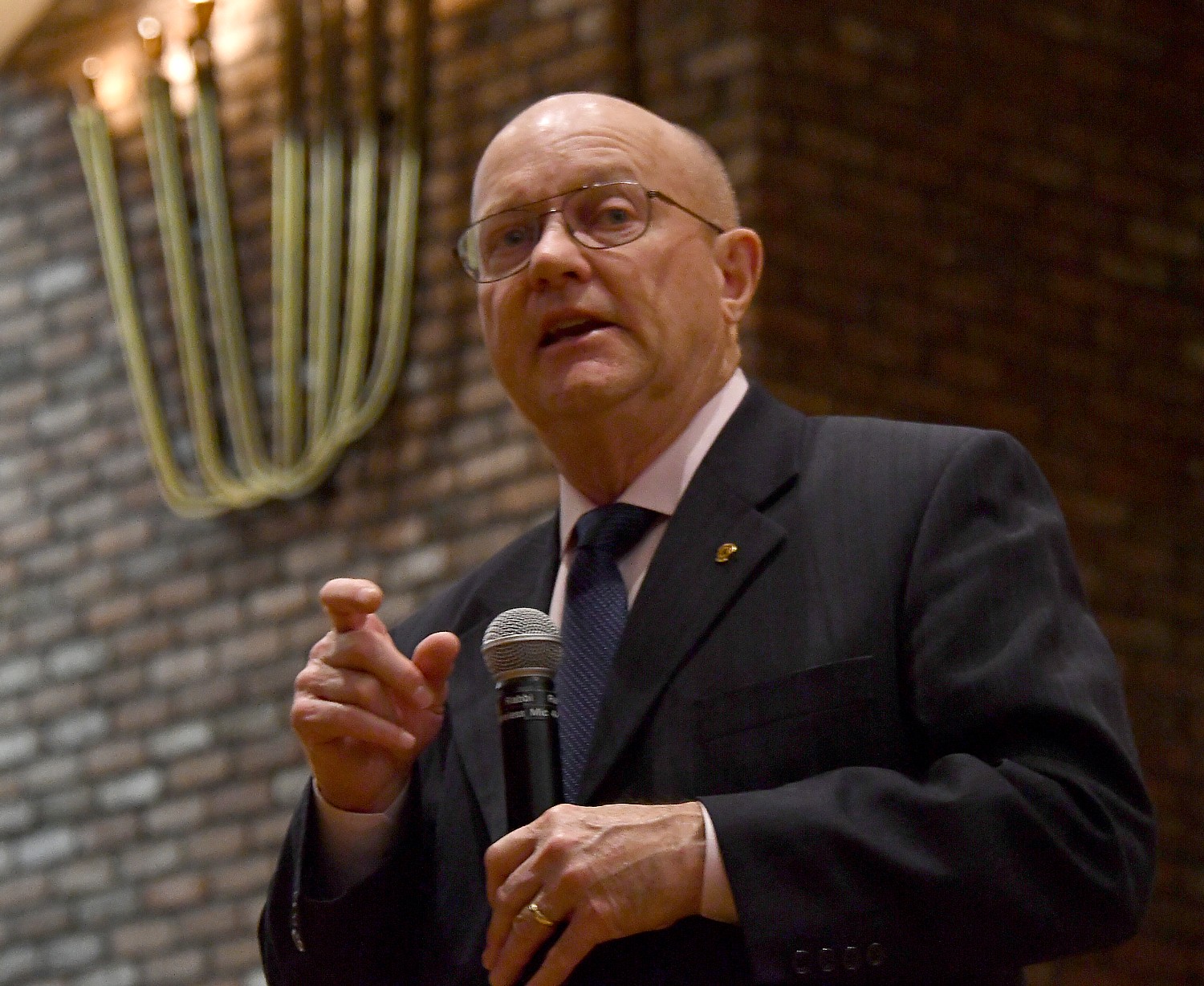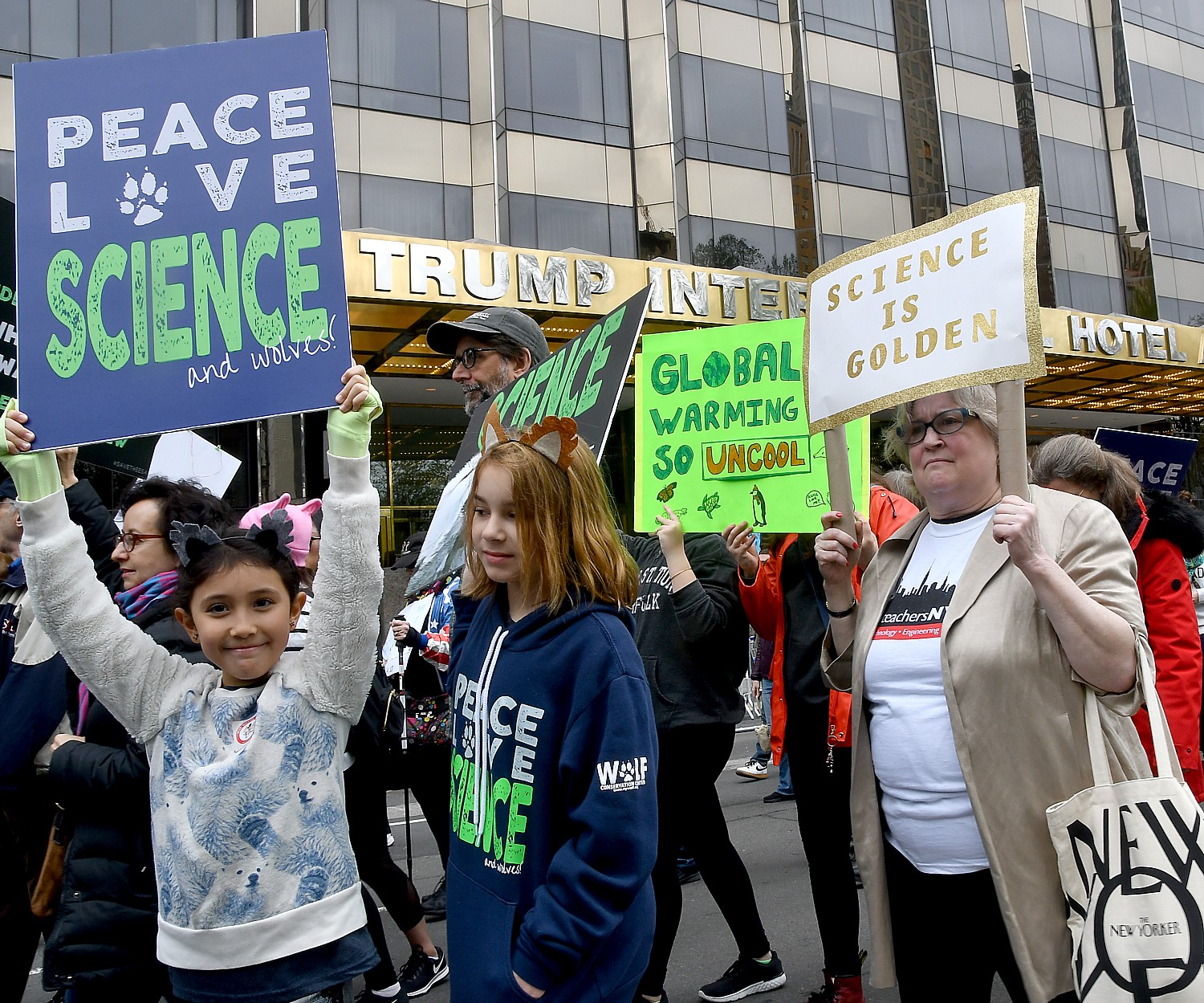
By Karen Rubin, News & Photo Features
Tens of thousands of people in Washington DC and 600 cities around the world on Earth Day, April 22, joined in the first-ever global March for Science, co-organized by the Earth Day Network.
“We’ve just lived through the three hottest years on record, and yet, we continue to see policymakers politicize climate change, roll it back, and ignore it,” stated Kishore Hari, one of the March for Science organizers. “We need to show policymakers that we will not be complacent as they make cuts to life-saving scientific research. That’s why it’s important for us to show up in big numbers and prove that we will not let science be ignored.
“Scientific discovery and innovation are a critical part of our nation and our future — science extends our lives, protects our planet, puts food on our table, contributes to the economy, and allows us to communicate and collaborate with people around the world,” said Caroline Weinberg, National Co-Chair, March for Science. “Despite this fact, science and scientists, and evidence based policies are under attack. Policymakers threaten our present and future by ignoring scientific evidence when crafting policy, threatening scientific advancement through budget cuts, and limiting the public’s knowledge by silencing scientists. On April 22, scientists and science supporters will unite worldwide to protest these actions. Thousands of people in almost 500 cities around the world will march together in support of science’s role in society and policy and to ensure our future.”
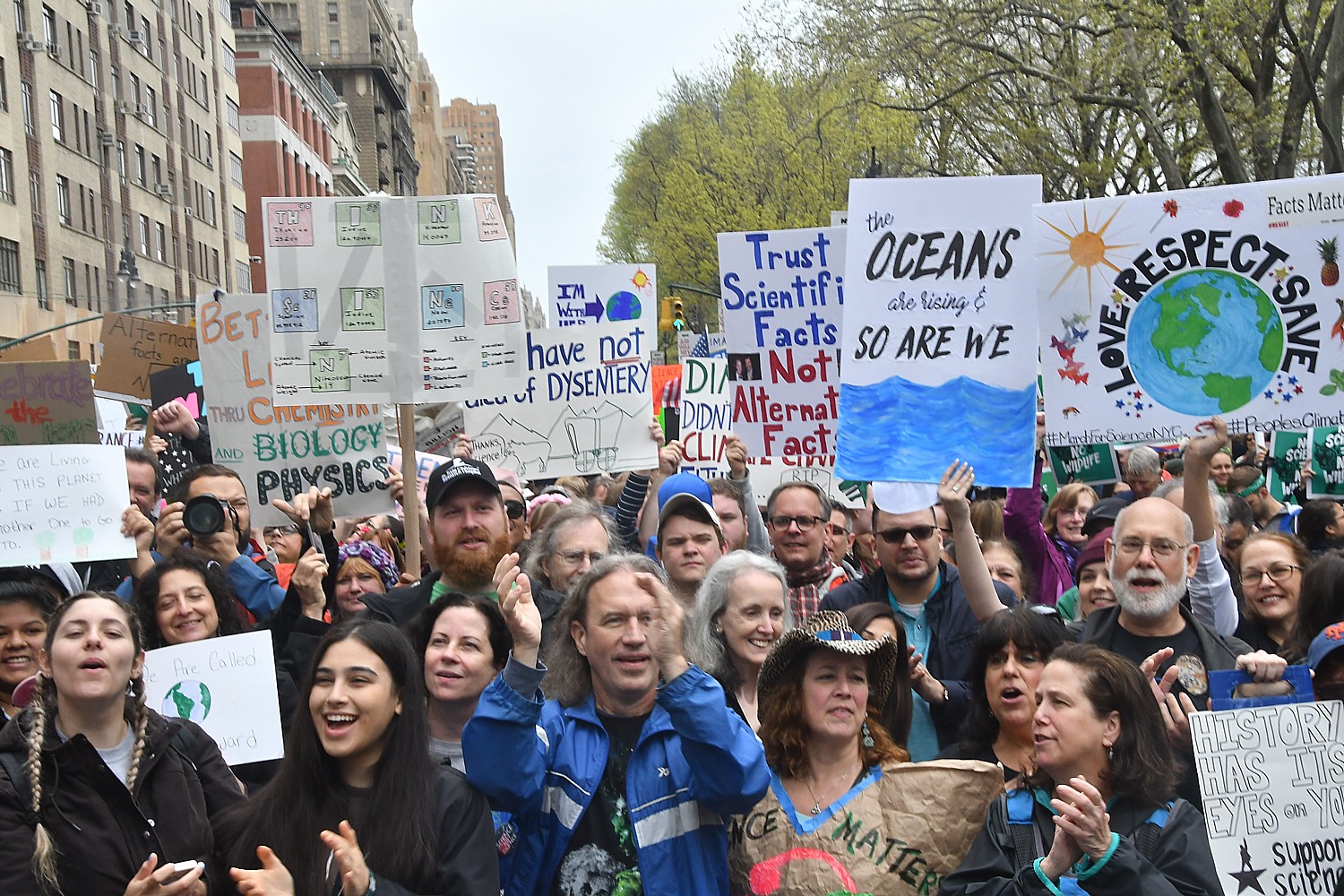
“The March for Science is an unprecedented call to action for everyone who knows that science is essential to public health, global and economic security, and the livelihood of communities around the world,” said Christine McEntee, Executive Director & CEO, American Geophysical Union. “This moment is bigger than the scientific community. It is truly an important moment for all people, not just scientists, to make a strong statement in support of policy that is informed by evidence-based science, and to promote the free and open exchange of ideas, innovation and discovery, diversity and inclusion, and to stand up for the people and programs who make it possible.”
Here in New York City, some 20,000 joined the march which extended from Central Park West down to Times Square, with the loudest cheers and jeers recorded as the marchers passed by the Trump International Hotel across from the entrance to Central Park.
“This is what intelligence looks like.” They chanted.
“Hey hey what do you say, let’s all save the EPA.”
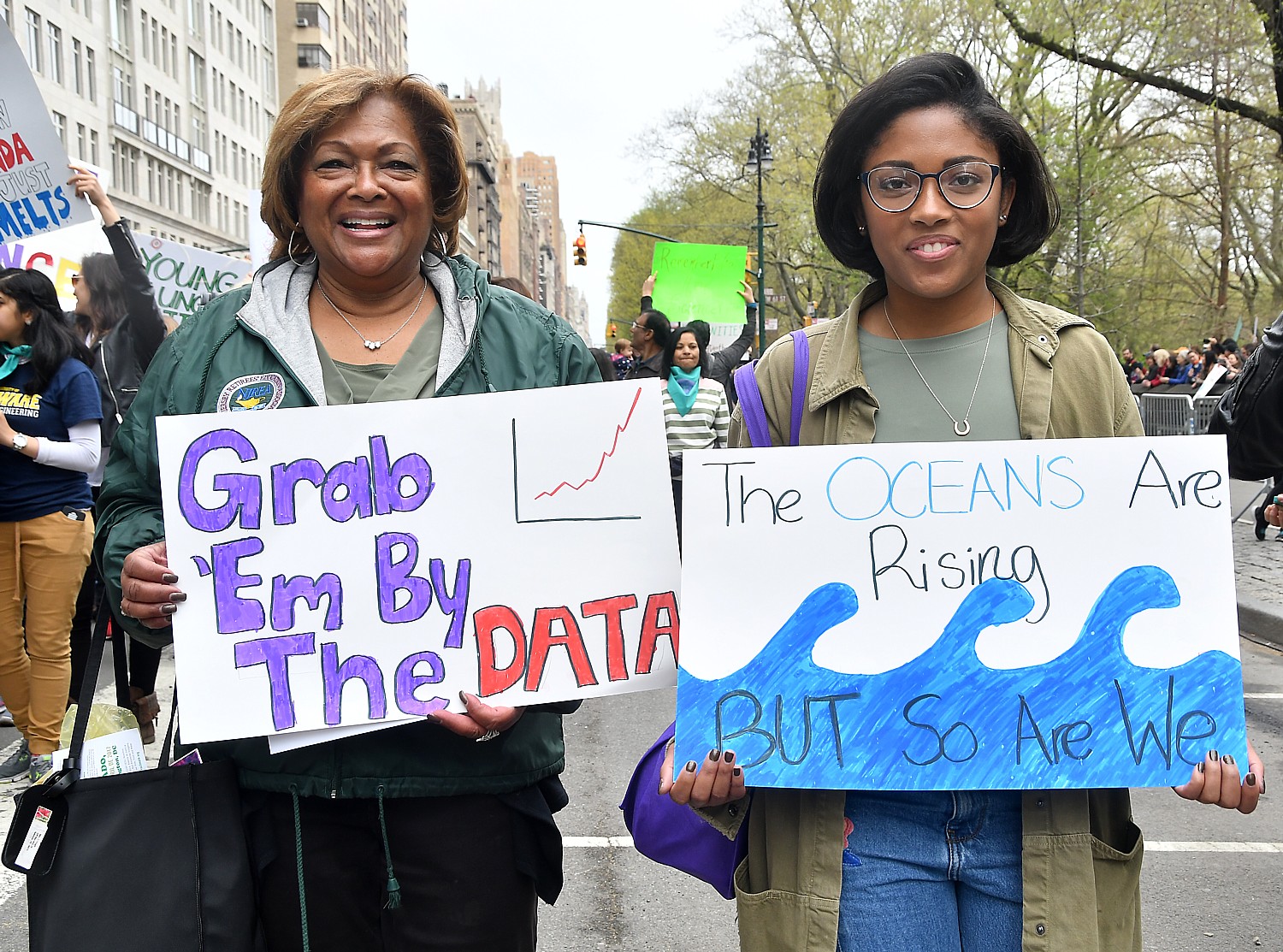
Signs were hand-drawn but heart-felt: “Data, Not Deceit.” “Make America Smart Again.” “Science, Saving Humanity Since 1612.” “Science, not Silence” “Science is like Magic but Real.”
“You Can’t Spell Existence Without Science.” “A Planet is a Terrible Thing to Waste.”
“Don’t Acid Rain on My Parade.” “More Science. Less Fear.”
Indeed, at the rally that preceded the march, several speakers – including scientists and science teachers – thanked the science community for saving their life.

Several pre-teen girls and boys from the city’s public schools extolled the value of science education, of science that has made America the great innovator in the world, responsible for the Internet, driverless cars and manned spaceflight, and lectured the government officials on the importance of funding education and innovation.
“The progress we have made would not have happened without science,” one said. “Einstein. Tesla. Anything created came from science. Our parents, our doctors use science. Medicine was created by science. Everything is Science.”

Lily Beshell, a young girl straining on a crate to reach the microphone, who proudly declared herself to be one of the “black girls who code,” said, “Science is everything that happens in this world – even when you drop a pencil. That may not be so exciting, but if you think how the pencil drops – by gravity. “
Ferdinand, representing the STEM Teachers of NYC and one of 150 marching today, said he is a prostate cancer survivor whose life was saved by science. “Learning how to do science is important for all kids – they gain knowledge and power over their lives. They use evidence, not opinion or heresay or authority, to decide how to think about the world.”
An 18-year old, working in stem cell research at the Centers for Excellence in Youth Education program at the Icahn School of Medicine at Mount Sinai, said he had developed a passion for mitigating the effect of global climate change, “the greatest threat, and I hope to be part of the solution.
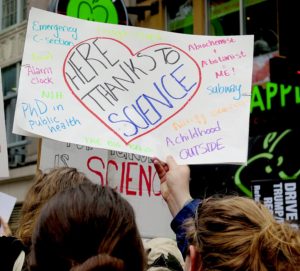
“Hundreds of years ago, it was believed that evil spirits and bad air caused sickness. Today we now know disease is caused by microbes and we have developed cures.”
Debbie Lee Cohen of Cafeteria Culture – also a cancer survivor – teaches scientific principles through creating things, like the massive puppets built out of toxic, polluting Styrofoam plates that were used to convince the City Council to ban them from school lunches.

“We need science to show how environmental protection is linked to public health. We need the US EPA to protect our health, NOAA, NASA, we need publicly funded science for basic survival. Climate crises are affecting us, especially kids. Science is fundamental to a healthy democracy, a healthy planet for all.”
Ross Cagen, a professor at Mount Sinai working on next-gen cancer therapies, said, “We are part of the greatest scientific community the world has ever seen. We value knowledge, discovery, facts [rolling cheers through the crowd for “facts”]; use evidence to make basic decisions, we value diversity.
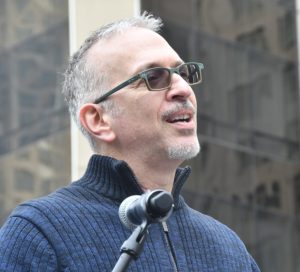
“These are scary times. I feel your anxiety, concerns. As scientists, we never wanted to merge science and politics. But that is happening to us.
“For parents with cancer scared for themselves and their children, science offers hope. The American population lives 30 years longer than years ago because of science…. We need courage to stand against those who would destroy our freedoms.
“In a world where standing up for scientific evidence is suddenly a political act, curing disease is losing its standing as a priority…. Let’s march.”
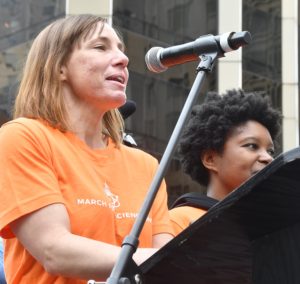
And to the strains of Star Wars, and an invocation, “May the force be with you,” they set off down Broadway.
The New York City march was one of several hundred around the world in a global effort to push back against a political climate that has become increasingly hostile toward sound, evidence-based science and its value to society. The flagship event took place on the National Mall in Washington, DC.
Organizers have partnered with over 170 organizations to make an impact throughout the world, including Earth Day Network, American Geophysical Union, National Science Teachers Association, and Carnegie Science. (A full list of partner organizations can be found here.)
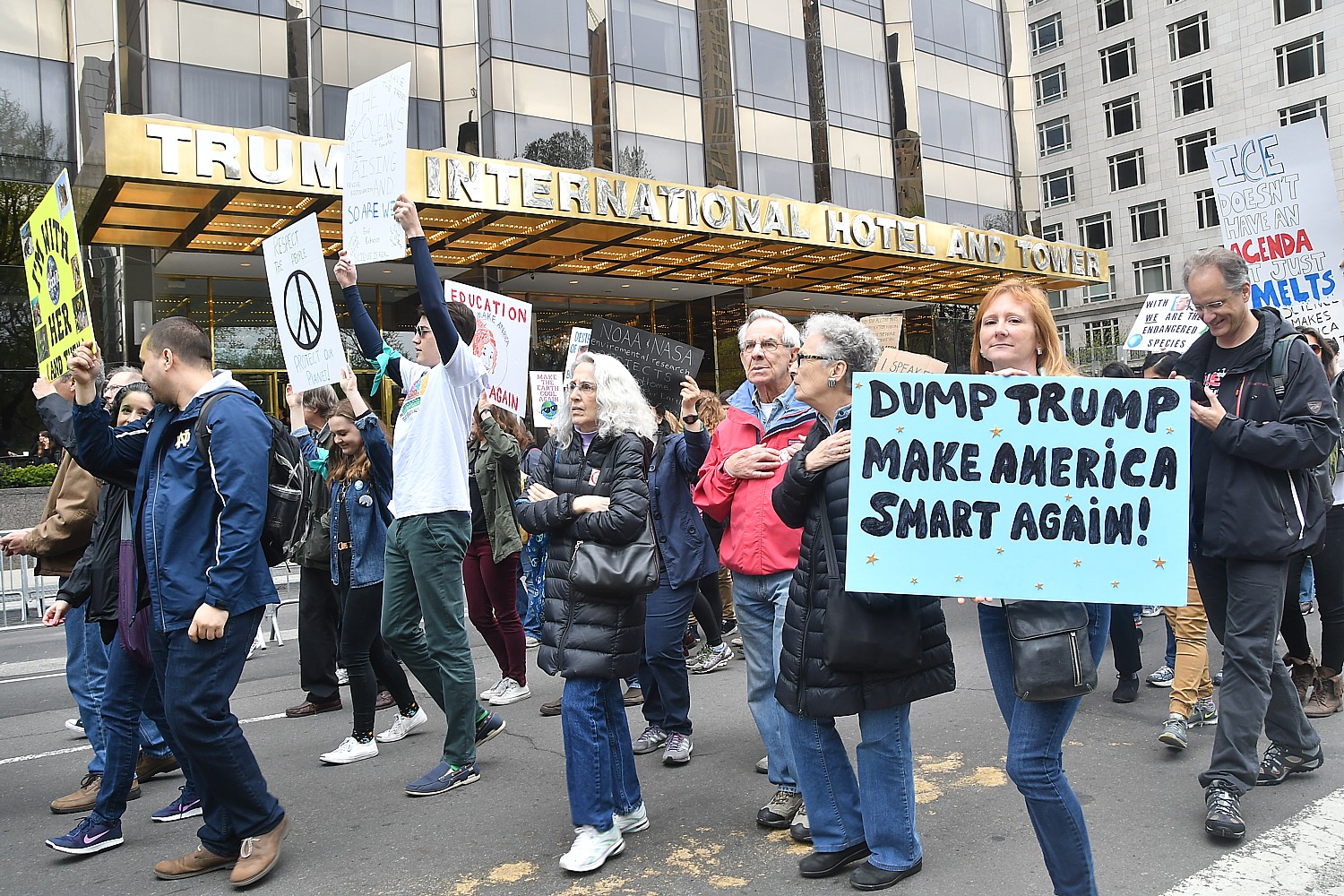
“We are thrilled by the outpouring of support from museums, aquaria, scientific societies, NGOs, universities, religious groups and citizen science organizations,” said Ayana Elizabeth Johnson, Co-Director of Partnerships, March for Science. “This grassroots movement — with 198 partner organizations (and counting!) — represents a broad, diverse, and inclusive coalition in support of science and evidence-based policy making.”
“An ethical science is meaningful to us all and its role in our communities, our homes and policy making should be protected and celebrated,” said Kristian Aloma, Director, March for Science Chicago. “Chicago is a science city, and we look forward to joining communities throughout the world marching in support of science that can help answer the important questions that affect us all.”

“Defending science, innovation, and discovery is an absolute must in every community throughout the world,” said Claudio Paganini, Organizer, March for Science Berlin. “We are proud to join each of the marches on April 22 to say in one, unified, global voice that science is essential to our futures.”
More information is at www.marchforscience.com.
Trump Earth Day Message Fails to Mention Climate Change

As if to confirm the protesters’ worst fears, Trump released a statement for Earth Day which did not mention Climate Change, but did emphasize prioritizing the economy over environment.
“Our Nation is blessed with abundant natural resources and awe-inspiring beauty. Americans are rightly grateful for these God-given gifts and have an obligation to safeguard them for future generations. My Administration is committed to keeping our air and water clean, to preserving our forests, lakes, and open spaces, and to protecting endangered species.
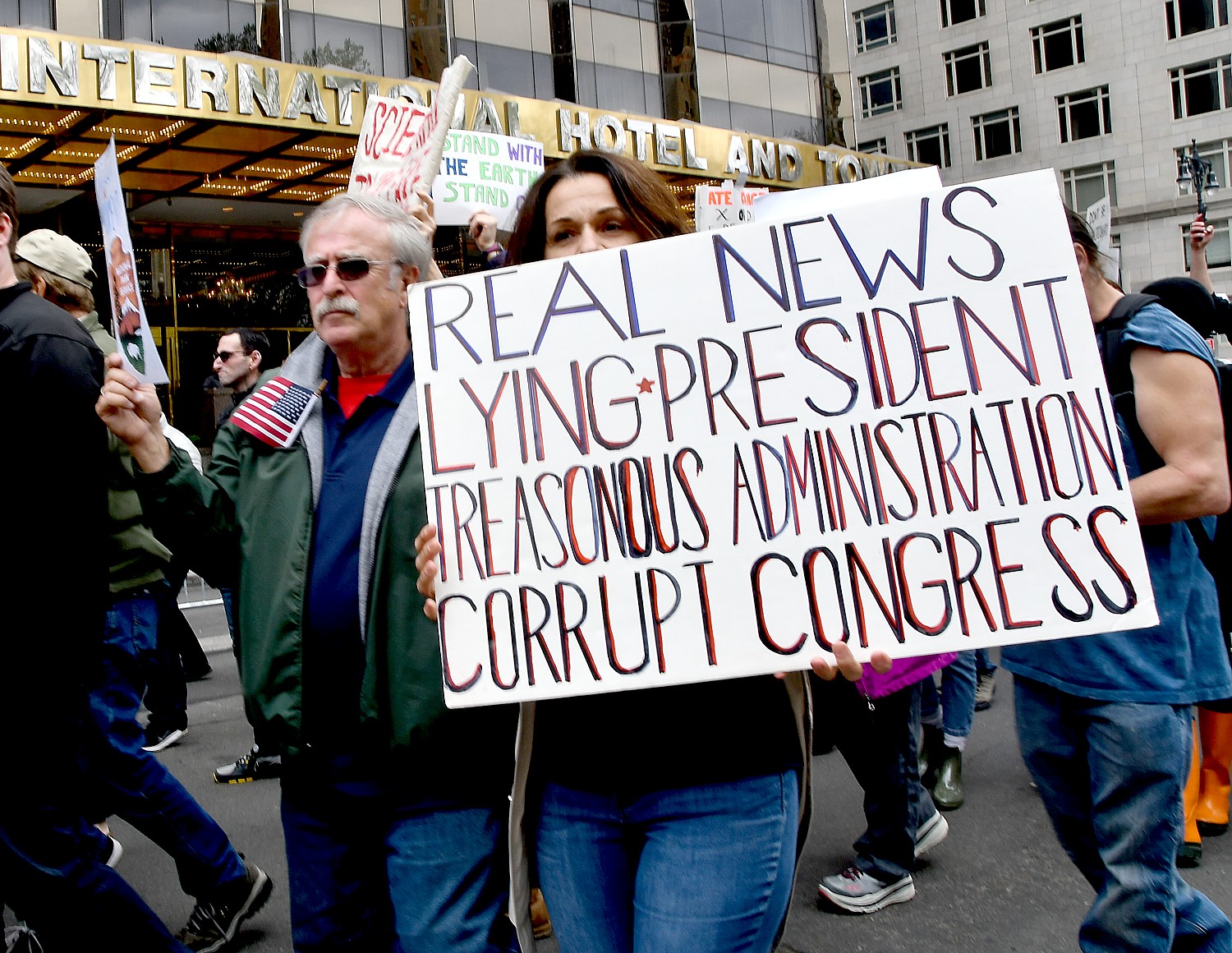
“Economic growth enhances environmental protection. We can and must protect our environment without harming America’s working families. That is why my Administration is reducing unnecessary burdens on American workers and American companies, while being mindful that our actions must also protect the environment.
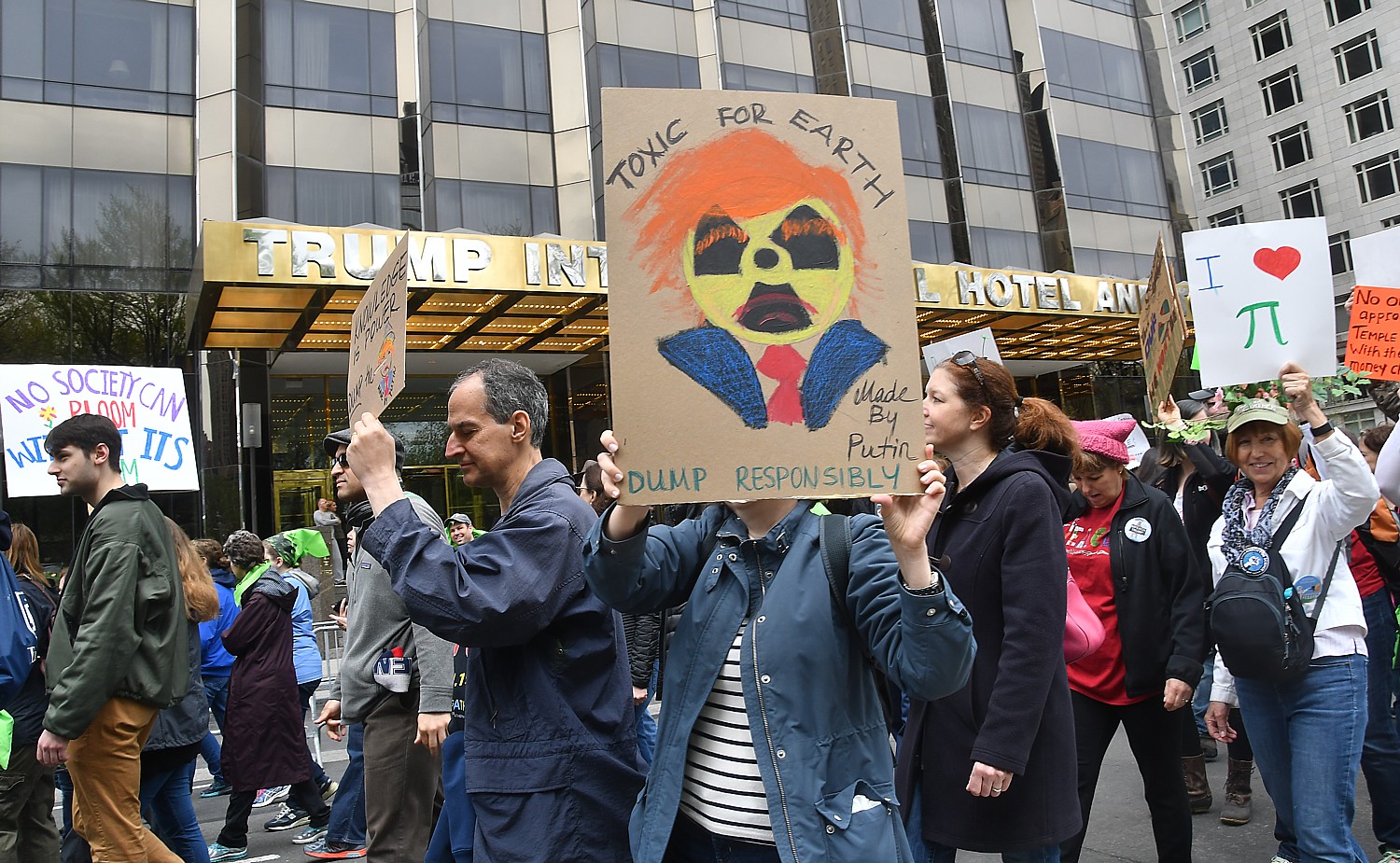
“Rigorous science is critical to my Administration’s efforts to achieve the twin goals of economic growth and environmental protection. My Administration is committed to advancing scientific research that leads to a better understanding of our environment and of environmental risks. As we do so, we should remember that rigorous science depends not on ideology, but on a spirit of honest inquiry and robust debate.
“This April 22nd, as we observe Earth Day, I hope that our Nation can come together to give thanks for the land we all love and call home,” Trump’s statement read.
______________________
© 2017 News & Photo Features Syndicate, a division of Workstyles, Inc. All rights reserved. For editorial feature and photo information, go to www.news-photos-features.com, email [email protected]. Blogging at www.dailykos.com/blogs/NewsPhotosFeatures. ‘Like’ us on facebook.com/NewsPhotoFeatures, Tweet @KarenBRubin

